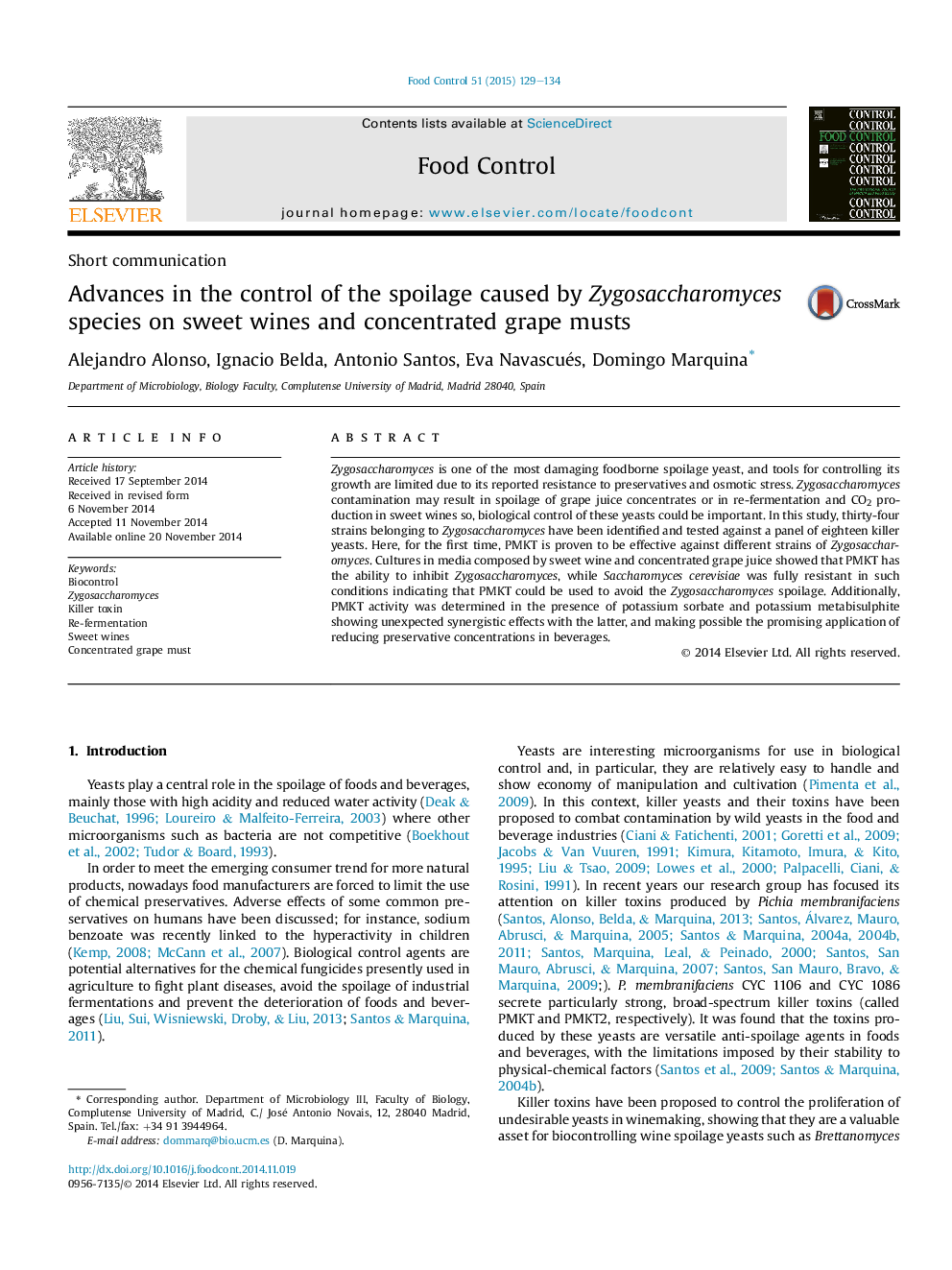| کد مقاله | کد نشریه | سال انتشار | مقاله انگلیسی | نسخه تمام متن |
|---|---|---|---|---|
| 6390976 | 1628411 | 2015 | 6 صفحه PDF | دانلود رایگان |

- The killer activity of PMKT is proven to be effective against Zygosaccharomyces.
- S. cerevisiae is fully resistant to PMKT in high sugar beverages.
- PMKT shows a synergistic effect with potassium metabisulphite.
- PMKT is of potential use on Zygosaccharomyces biocontrol in sweet beverages.
Zygosaccharomyces is one of the most damaging foodborne spoilage yeast, and tools for controlling its growth are limited due to its reported resistance to preservatives and osmotic stress. Zygosaccharomyces contamination may result in spoilage of grape juice concentrates or in re-fermentation and CO2 production in sweet wines so, biological control of these yeasts could be important. In this study, thirty-four strains belonging to Zygosaccharomyces have been identified and tested against a panel of eighteen killer yeasts. Here, for the first time, PMKT is proven to be effective against different strains of Zygosaccharomyces. Cultures in media composed by sweet wine and concentrated grape juice showed that PMKT has the ability to inhibit Zygosaccharomyces, while Saccharomyces cerevisiae was fully resistant in such conditions indicating that PMKT could be used to avoid the Zygosaccharomyces spoilage. Additionally, PMKT activity was determined in the presence of potassium sorbate and potassium metabisulphite showing unexpected synergistic effects with the latter, and making possible the promising application of reducing preservative concentrations in beverages.
Journal: Food Control - Volume 51, May 2015, Pages 129-134